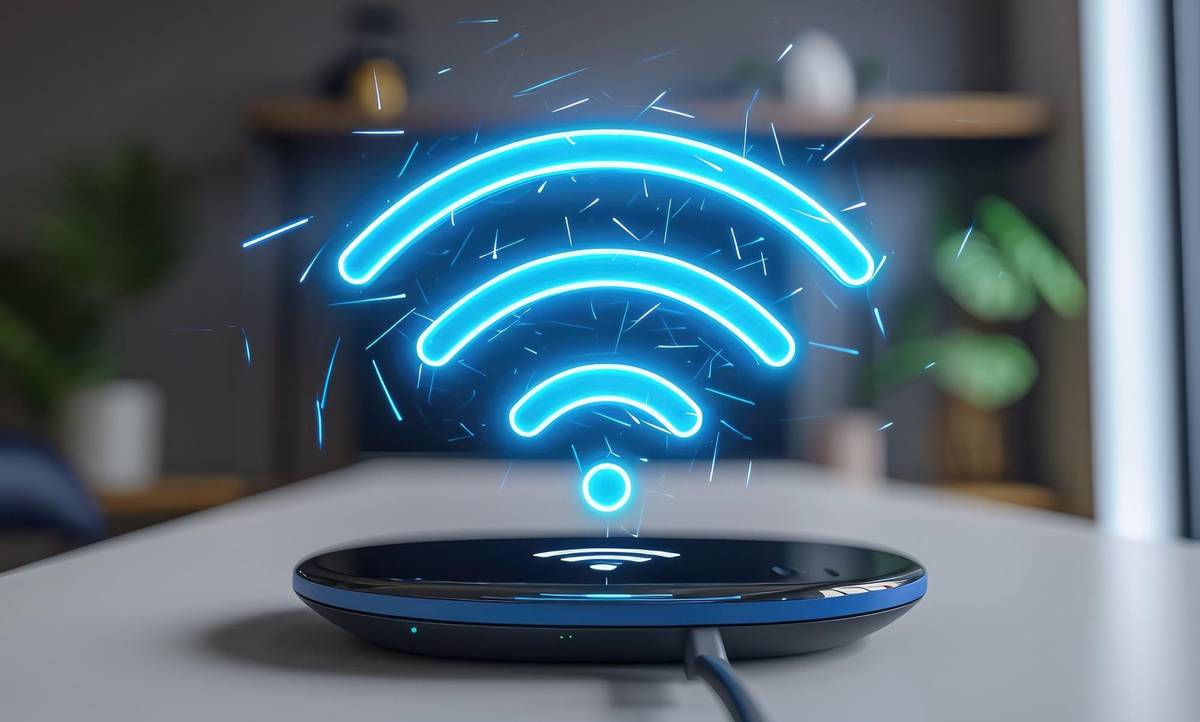How Wi-Fi works
Wi-Fi uses radio signal to provide wireless internet access to our digital devices.
These come from a wireless router that sends out radio waves on a specific frequency, rather like ripples on a pond. These signals are picked up by tiny antennas in your smart phone or computer.
Everything is broken down into binary code which is transformed into wave frequencies when accessed through Wi-Fi. So, when you hit ‘send’, that photo you’re sharing is broken down into 0’s and 1’s and then reassembled on your friend’s phone as the smiling selfie you’ve just snapped.
The router uses a standard called 802.11 to encode data like web pages, messages and videos into the shape of the radio waves. Your devices internal Wi-Fi chip receives the signal, decodes the data and allows you to surf the web and makes calls.
If you could see all these radio frequencies swirling around, everything would be travelling around you like a rainbow storm in your room. Thankfully they are invisible to the human eye.
Wi-Fi signal and strength
There’s a catch with Wi-Fi – its radio signals get weaker and more distorted the further you travel from the router’s antennas. Building materials such as concrete and brick also have a negative impact. And then on top of that, everyday household objects can get in the way too. Baby monitors, cordless phones, wireless cameras and microwaves can all interfere and reduce speed.
Luckily routers use high-power amplifiers and multiple antennas to spread the signal through. There are also various extra bits of hardware, such as Wi-Fi boosters and mesh Wi-Fi, you can get to help expand and strengthen your network. If you do have issues with patchy Wi-Fi in parts of your home, consider the below for better coverage.
Sky WiFi Max
This add-on service offers gives you an extra upgraded router that connects to the main broadband hub, plus up to three extra pods (mesh router extenders), which all help the signal to go faster and further. With this you'll get a broadband promise of at least 3Mbps in every room.
BT Complete Wi-Fi
This signal extender connects to up to three extra Wi-Fi discs around your home to create a seamless network throughout. It works alongside the upgraded Smart Hub 2 router which you'll get if signing up to this add-on service.
Vodafone Pro II Broadband
This service gives you the Super Wifi 6E Booster which connects to over 150 devices and extends your signal strength. It also has a 4G Broadband Back-up device, so if your Wi-Fi every did go down you will still be able to always connect to the internet.
Are Wi-Fi radio waves bad for our health?
Wi-Fi works at extremely low voltages. Even at short distances it's just part of the invisible household smog like TV and radio signals. it uses non-iodizing wavelengths of radiation that are harmless to the human body. The sun on the other hand uses ultraviolet rays. So, it's actually more dangerous for your body to go outside than to sit next to your router!
Where does the name ‘Wi-Fi’ come from?
Forget trying to work out what ‘Wi-Fi’ stand for, it’s not an acronym or abbreviation, it’s just a made up name.
Wi-Fi was invented and first released for consumers in 1997 when a committee called 802.11 was created. This led to the creation of IEEE802.11 which refers to a set of standards that define communication for wireless local area networks (WLANs). Not very catchy, hence a marketing move to call it ‘Wi-Fi’ based on the word 'Hi-Fi' which means 'high fidelity'. A technical term used for high-quality audio technology.
How to set up Wi-Fi
To access Wi-Fi at home all you need is a Wi-Fi router. Also known as a ‘hub’, this hardware will be included in any broadband deal you sign up for.
There might be slight differences depending on what router you are using, but these are the general easy steps to get started.
- Plug your router in at a power source and connect it to the broadband or telephone wall socket using the supplied cables.
- Your Wi-Fi network should appear, this is normally indicated by a green light on the router.
- From your digital devices, select this Wi-Fi network and enter the password that should be supplied with the router.
- Enjoy surfing the internet minus any messy wires!
Can you get Wi-Fi for free?
There are thousands of public Wi-Fi hotspots where you can access broadband. Some are completely open and free, others just need a password sign-up and some might need payment.
Most public places these days will have wireless access available. To connect, just enable Wi-Fi on whatever smart device you are using and let it find available networks. You might be able to start using this Wi-Fi network straight away, but it’s fairly common to register with an email address first.




